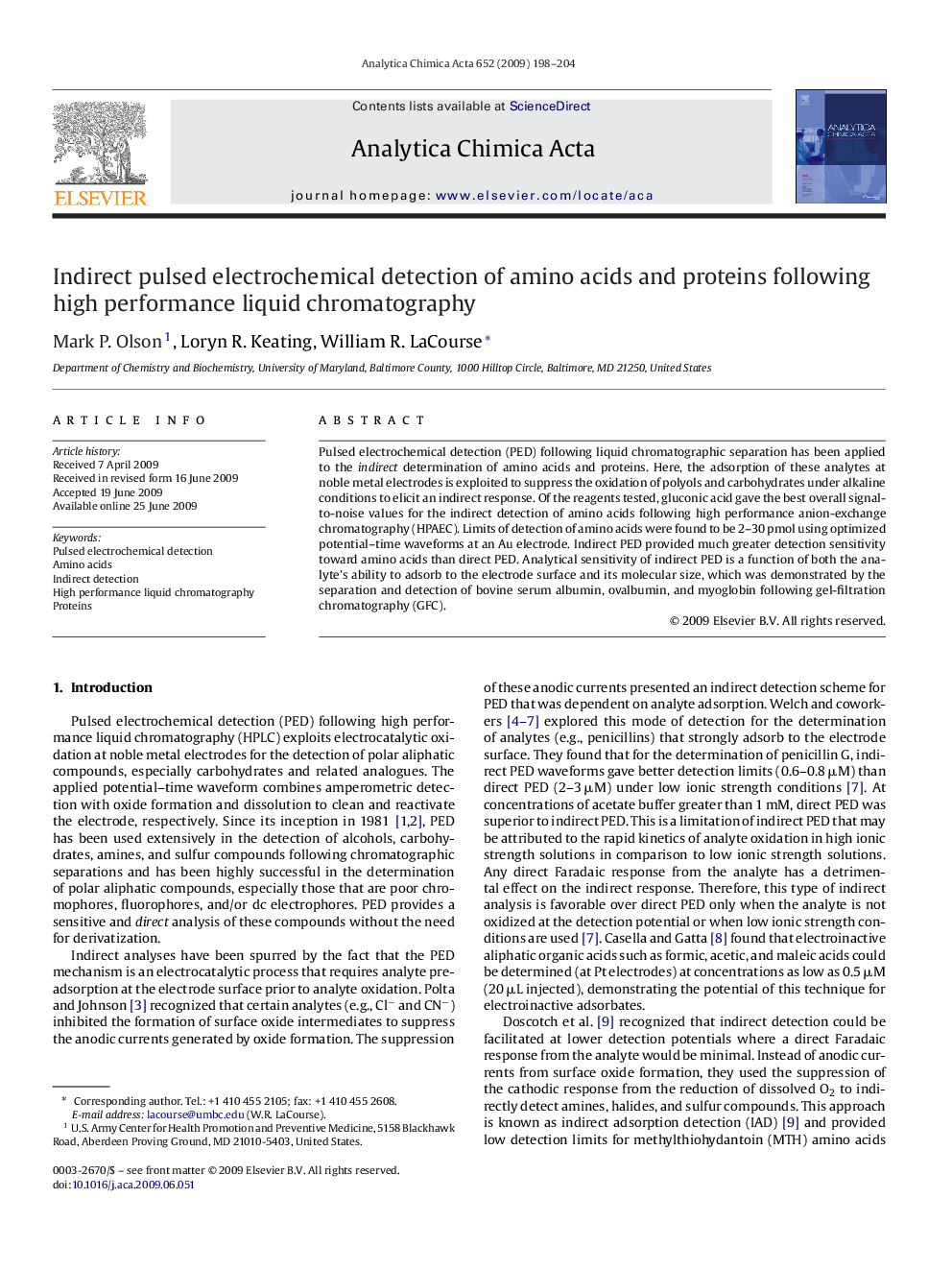| Article ID | Journal | Published Year | Pages | File Type |
|---|---|---|---|---|
| 1168282 | Analytica Chimica Acta | 2009 | 7 Pages |
Pulsed electrochemical detection (PED) following liquid chromatographic separation has been applied to the indirect determination of amino acids and proteins. Here, the adsorption of these analytes at noble metal electrodes is exploited to suppress the oxidation of polyols and carbohydrates under alkaline conditions to elicit an indirect response. Of the reagents tested, gluconic acid gave the best overall signal-to-noise values for the indirect detection of amino acids following high performance anion-exchange chromatography (HPAEC). Limits of detection of amino acids were found to be 2–30 pmol using optimized potential–time waveforms at an Au electrode. Indirect PED provided much greater detection sensitivity toward amino acids than direct PED. Analytical sensitivity of indirect PED is a function of both the analyte's ability to adsorb to the electrode surface and its molecular size, which was demonstrated by the separation and detection of bovine serum albumin, ovalbumin, and myoglobin following gel-filtration chromatography (GFC).
